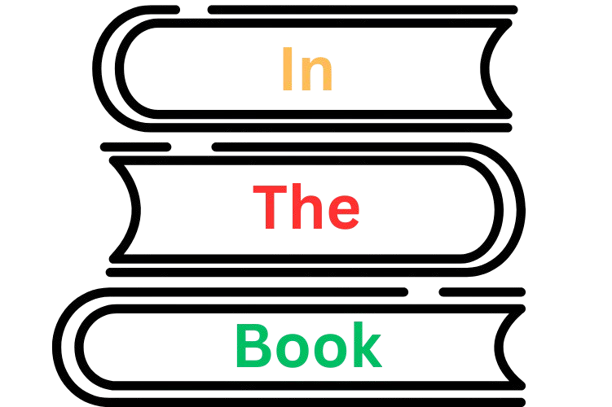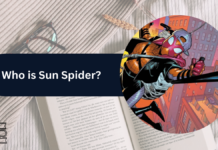Writing from the first person point of view is like putting on a pair of glasses that lets you see the world through someone else’s eyes. It is a way of telling a story where the narrator says things like “I went to the store” or “I felt sad.” This style is used a lot in books, stories, and even everyday talk.
Contents
- What is First Person Point of View?
- Why Use First Person?
- Examples of First Person
- Types of first-person point of view
- First-person point of view words and language
- What is the difference between first, second, and third-person point of view?
- What is first-person limited and first-person omniscient point of view?
- Tips for Writing in First Person
- Challenges of First Person
- Conclusion
What is First Person Point of View?
First person point of view is when a story is told by one character at a time. This character talks about themselves and shares their own thoughts and feelings. They use words like “I,” “me,” “my,” and “mine.” It is like they are having a chat with you, the reader.
Why Use First Person?
Using first person can make a story feel more personal and real. It is like you are right there with the character, seeing what they see and feeling what they feel. It can make you feel closer to the character, like they are a friend telling you their story.
Examples of First Person
Here are some simple examples of first person:
- “I walked my dog in the park. It was a sunny day, and I felt happy.”
- “I didn’t know what to do. I was scared and alone.”
In these sentences, the person speaking is also the main character of the story.
Types of first-person point of view
In literature, the first-person point of view can be categorized into different types based on the narrator’s level of participation in the story and their reliability:
- First-Person Central: The narrator is the main character, deeply involved in the plot, and tells the story as it revolves around them.
- First-Person Peripheral: The narrator is a character in the story but not the main protagonist. They observe the events that happen to others.
- First-Person Unreliable: The narrator is biased, misinformed, or deliberately deceptive, leading the reader to question the truth of the narrative.
- First-Person Stream of Consciousness: This style reflects the narrator’s thoughts and feelings in a continuous flow, often without conventional structure.
- First-Person Epistolary: The story is told through letters, diary entries, or other documents written by the narrator.
First-person point of view words and language
To avoid making your story too self-centered when writing in the first person point of view, you can:
- Include Other Point of views: Even though the story is from one character’s viewpoint, you can still include other characters’ perspectives through dialogue or interactions.
- Focus on the World: Describe the setting, other characters, and events that do not revolve solely around the main character to create a richer narrative.
- Development of Character : Show growth and change in your character over time, which can shift the focus from their immediate thoughts and feelings to their journey.
- Meaningful Narration: Ensure that the narration serves a purpose in the story, such as revealing important plot points or character traits, rather than just expressing the protagonist’s thoughts.
What is the difference between first, second, and third-person point of view?
The difference between first, second, and third-person points of view is all about who is telling the story:
- First Person: This is when the narrator is a character in the story, telling it from their perspective using pronouns like “I,” “me,” “my,” and “we.” The reader sees everything through this character’s eyes, and all events are colored by their feelings and opinions.
- Second Person: This point of view is less common and addresses the reader directly using the pronoun “you.” It is as if the story is happening to the reader, and the narrator is guiding them through the events.
- Third Person: Here, the narrator is not a character in the story. They tell the story about other characters using pronouns like “he,” “she,” “it,” and “they.” The narrator can be all-knowing (third-person omniscient) or limited to the perspective of one character at a time (third-person limited).
What is first-person limited and first-person omniscient point of view?
First-person limited and first-person omniscient are two types of narrative perspectives in storytelling:
- First-Person Limited: In this point of view, the narrator tells the story from their own perspective using “I” or “we,” but their knowledge is restricted to their own thoughts, feelings, and experiences. They do not know what other characters are thinking or feeling unless told directly.
- First-Person Omniscient: This is a less common approach where the narrator tells the story from their perspective using “I” or “we,” but they have all-knowing knowledge. They can describe what other characters are thinking and feeling, even though it is still told through the narrator’s personal lens.
Tips for Writing in First Person
- You need to understand your character really well. What do they like? What are they afraid of? This helps you write their story in a way that’s true to them.
- Always use “I” or “we” when your character is talking about themselves. Do not switch to another point of view by accident.
- Since you are inside your character’s head, you can show us how they feel. Are they happy, sad, angry? Let the reader know.
- Write like a real person would talk. This makes your character believable and your story easy to get into.
Challenges of First Person
Writing in first person is not always easy. Sometimes it is hard to keep the story interesting when you can only see things from one person’s view. Moreover, you have to be careful not to make everything about “I” this and “I” that, which can get boring.
Conclusion
First person point of view can be a fun and exciting way to tell a story. It lets readers get up close and personal with your characters. Just remember to stay true to your character’s voice, show their feelings, and keep it real. Happy writing!
- The Real Reason Invoices Go Unpaid — And How Collection Automation Can Fix It
- Best Places to Buy Diamonds and Engagement Rings Online
- Building Focus and Strategy Through Interactive Digital Experiences
- How Students’ Reading Interests Influence Their Motivation and Performance in Writing Assignments
- The Damages Resulting from the Use of Suboxone

Chandler is an avid automobile enthusiast who is passionate about all things on wheels. From the latest car models to classic vintage rides, I love exploring the automotive world’s intricate details and engineering marvels. With years of experience in test-driving, reviewing, and analyzing cars, I provide readers with comprehensive insights and honest opinions.



























